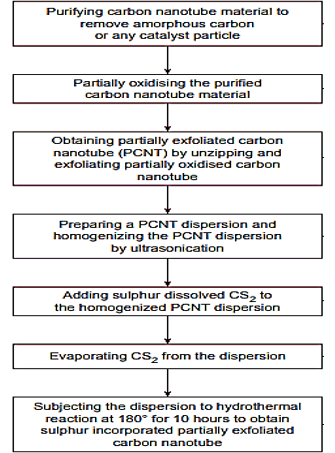Industrial Consultancy & Sponsored Research (IC&SR) , IIT Madras
Binary Reaction Embedded Anode for High Current Density and Long Cycle Life Lithium Ion Battery
Categories for this Invention
Categories: Electronics & Circuits | Chemistry & Chemical Analysis
Industry: Energy Storage Technology
Applications: Portable Electronics, e-vehicles, Renewable Energy Storage, Consumer Electronics, Automotive, Energy Storage Systems
Market: The global lithium-ion battery anode market was worth USD 7.1 B in 2020 and is further projected to reach USD 24.8 B by 2027, growing at a CAGR of 19.6% in forecast period.
Image Gallery
Problem Statement
- Lightweight, high-power rechargeable batteries are crucial for compact devices.
- Lithium-ion batteries are ideal for portability.
- Electrode material integrity is key for high current density and long battery life.
- Graphite is used in commercial lithium ion batteries due to its cycle stability and long cycle life, but has limited storage capacity.
- Silicon nanostructures offer higher ion storage but may lead to SEI formation.
- There is a pressing need for improved battery materials with higher capacity & durability.
- The instant patent disclosure addresses above mentioned issues, and provides an innovative, high-capacity, long-lasting anode.
Technology
The present patent disclosure provides a Binary Reaction Embedded Anode for High Current Density and Long Cycle Life Lithium Ion Battery, comprises:
- a carbon nanotube material having partially exfoliated carbon nanotubes; and sulphur, wherein the sulphur is bonded to the carbon in the carbon nanotube matrix.
- conducting carbon, and polyvinylidene fluoride (PVDF) binder.
The carbon nanotubes are any of single walled carbon nanotubes, multi-walled carbon nanotubes or other metal oxide based structures modified with sulphur.
Method:

Key Features / Value Proposition
- The cell is capable of forming a stable solid-electrolyte interphase at a current density of 150 mA g-1 or greater.
- The cell retains a capacity of 200 mA h g-1 at a current density of 10 A g-1 for 7370 cycles or more and the discharge capacity of the cell after 10,000 cycles is 150 mA h g-1 or more.
- The anode is substantially free of elemental Sulphur. The carbon to Sulphur ratio is 9:1.
Questions about this Technology?
Contact For Licensing
sm-marketing@imail.iitm.ac.in
ipoffice2@iitm.ac.in
Research Lab
Prof. Ramaprabhu S
Department of Physics
Intellectual Property
- IITM IDF Ref.: 1449
- IP Grant No.: 394781
Technology Readiness Level
TRL- 3
Validated in Lab
